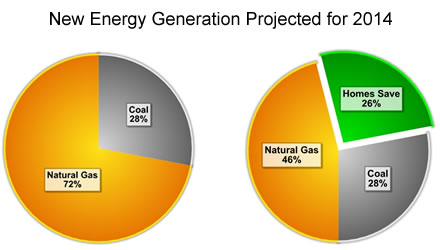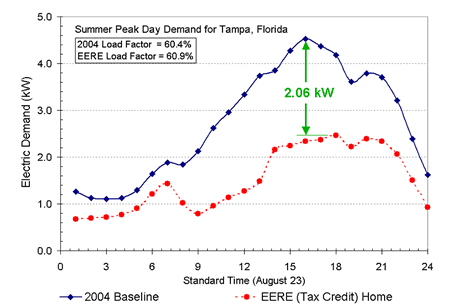
2006.02.03
FSEC Director Addresses 2014 Energy Use
— Taking Charge of Our Energy Future: Choosing the Better Pie
On January 10, 2006, FSEC Director Jim Fenton addressed the Florida Senate Committee on Communications and Public Utilities, commonly called the "Energy Committee," with a positive message on how Florida can leverage federal tax credits for renewable energy and energy efficiency to significantly alter its outlook for electric energy use in 2014. Current Florida projections for electric energy use in 2014 call for Florida utilities to produce 75 billion killowatt-hours more energy than they produced in 2004, a 32% increase in energy use over the decade.
Fenton compared the "business as usual model" that results in Florida's 2014 energy use projections against the results of an in-house FSEC study that illustrates how future electrical use could be dramatically reduced within Florida's largest energy use sector — residences, which make up 51% of the total.

The pie chart on the left presents Florida's current projection for growth in electric energy generation between 2004 and 2014 and the one on the right presents an alternative if renewable energy and energy efficiency are aggressively pursued by the state, leveraging the federal tax credits. (All savings were assumed to come from growth in natural gas generation due to the rapidly rising cost of natural gas.)
These results come from studies conducted by FSEC using typical Florida homes in various Florida climates. Results are then projected to statewide savings. To qualify for the federal tax credits, individual home savings are significant at 50% of heating and cooling costs. As a result, total home energy savings exceed 40% in all Florida climates.

These individual savings, when projected to a statewide level, result in significant benefits to the state over the 10-year time period between 2004 and 2014, as follows:
| Total energy savings | 24.7 TWh |
| Total consumer cost savings | $2.47 billion |
| Total fuel not purchased | $1.24 billion |
| Avoided capacity | 1,669 MW |
| Avoided generation costs | $1.67 billion |
| New jobs | 126,000 |
| Tradable renewable energy credits (TRECs) | $420 million |
| CO2 savings | 26.4 million tons |
Dr. Fenton's full power point presentation, "Taking Charge of Our Energy Future: Choosing the Better Pie" and the FSEC study that developed the data for the presentation, "Potential of Energy Efficiency and Renewable Energy Savings To Impact Florida’s Projected Energy Use in 2014" may be downloaded using the links below:
Taking Charge of Our Energy Future (Powerpoint, 2 MB)
Potential of Energy Efficiency and Renewable Energy (pdf 1.4 MB, html)
